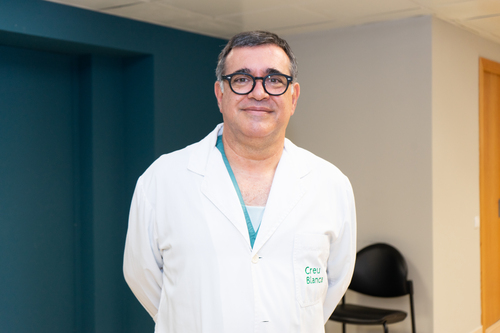Cystitis is a urine infection that is usually more frequent among women and constitutes one of the typical pathologies during the summer months. The heat, humidity and the possible increase in sexual intercourse during the summer season can cause the appearance of a bladder infection.
Those who have ever suffered from cystitis know how annoying and uncomfortable it can be, and it can even recur if the appropriate therapeutic recommendations are not followed. For this reason, Dr. Juan Llopis, urologist at CreuBlanca, gives you the keys to an accurate diagnosis and personalized treatment of this pathology.
What is cystitis?
Cystitis is a type of urinary tract infection that specifically affects the bladder. It can be acute (rapid onset), chronic (maintained over time) or recurrent (repeated).
The vast majority of cystitis are acute and are caused by a bacterial infection, which is characterized by sudden and short-term inflammation of the bladder. Generally, it is caused by an ascending bacterial infection, that is, bacteria that enter the bladder through the urethra. When they are repeated over time, they are known as recurrent or repeat cystitis. On the other hand, chronic cystitis is rare and difficult to solve, requiring the attention of a specialist in urology.
What symptoms does cystitis produce?
The most frequent symptoms of cystitis include an irritated or burning sensation when urinating, the need to urinate very frequently, abdominal pain, cloudy-looking and foul-smelling urine, and occasionally tens of fevers. If fever appears, it is a sign that the cystitis has spread to solid organs (kidneys, prostate or testicles).
In relation to the symptoms of cystitis, several situations can occur:
- For us to consider that there is acute cystitis, symptoms and a causative germ must coexist. In this case, it is necessary to carry out a treatment through the use of antibiotics.
- If there is a germ but no symptoms, it is possible that it is an asymptomatic bacteriuria, very common in older people and that does not require treatment.
- If symptoms appear but there is no germ, we may be dealing with a cystopathy, so lithiasis, tumors, etc. must be ruled out.
In any case, antibiotic treatment should only be applied if there are symptoms and there is suspicion or confirmation of a germ in urine.
What tests to perform to diagnose cystitis?
The specialist evaluates the symptoms and requests a urine sample for laboratory analysis. This analysis allows detecting the presence of bacteria, white blood cells and other indicators of infection in the urine.
If the presence of a bacterial infection is suspected or confirmed, a urine culture is performed to identify the type of bacteria present in the bladder that causes cystitis, thus helping to determine which antibiotic will be most effective for treatment. If the culture is negative or the cystitis episodes recur, the specialist may choose to perform imaging tests.
How to treat cystitis?
Urine infection appearing for the first time. Acute cystitis is usually treated with antibiotics if it is caused by bacteria; or with antifungals if they are caused by fungi.
Urine infection that comes back. On the other hand, recurrent cystitis may require changes in hygienic-dietary habits, use of antibiotics at controlled doses, among other therapeutic measures. If it is a chronic cystitis, then it is necessary to apply a very specific treatment that must be prescribed by doctors specialized in the management of this type of patient.
In any case, antibiotic treatment should never be started if there is no ongoing urine culture. Because antibiotics mask the results of urine cultures and make an accurate diagnosis difficult.
How to prevent cystitis?
Cystitis is favored by a loss of microbial flora, which is normally present in the vagina of premenopausal women, due to the use of compresses, presence of urinary incontinence, lack of fluid intake, low micturition frequency, and chronic constipation.
For this reason, specialists recommend:
- Avoid excessive hygiene and the use of intravaginal soaps.
- Keep the vagina in the best hydration conditions.
- Drink at least 1.5 liters of water a day and urinate between 6 and 8 times.
- Correct incontinence and avoid the use of unnecessary pads and panty liners.
At the CreuBlanca Urology Unit we give urinary infections, among other urological disorders, the importance they deserve in order to improve people’s quality of life. Our multidisciplinary team of specialists will help you obtain an accurate diagnosis and the appropriate treatment to avoid recurrences and future complications.

